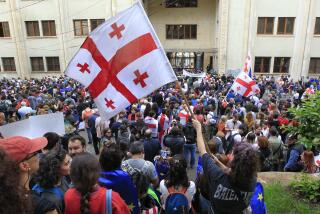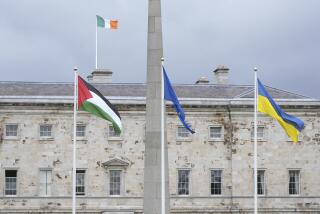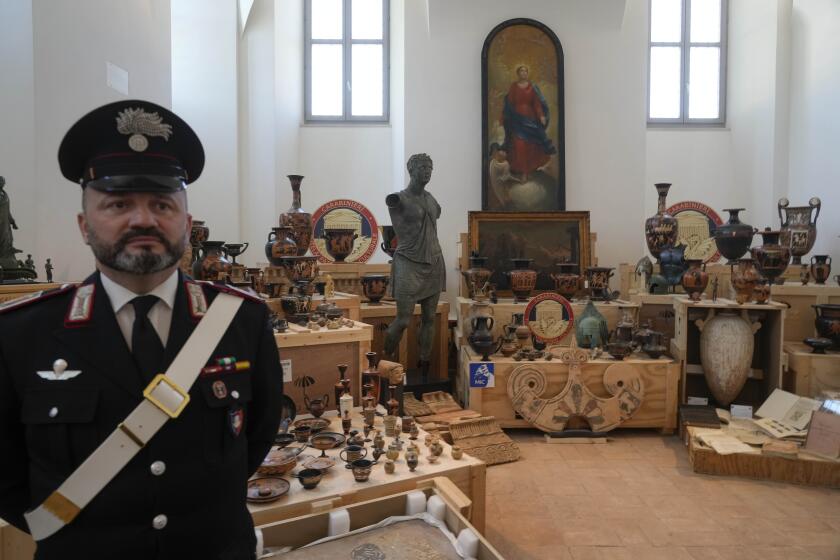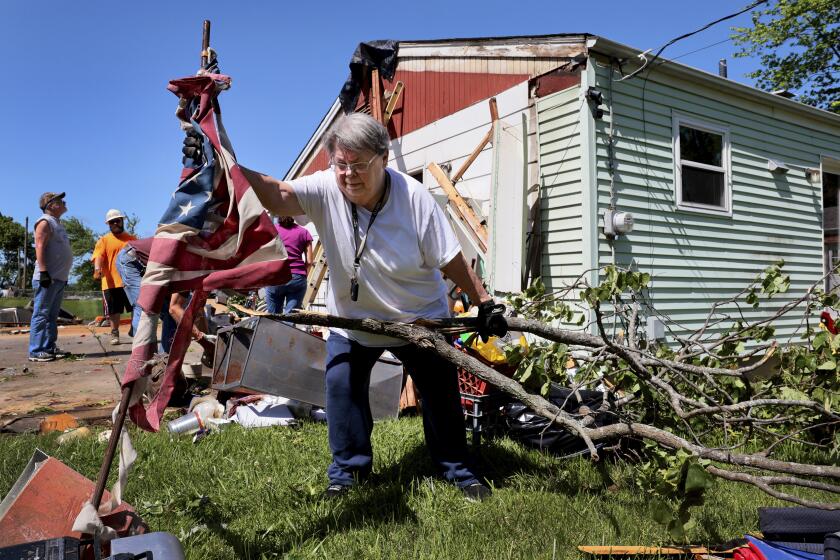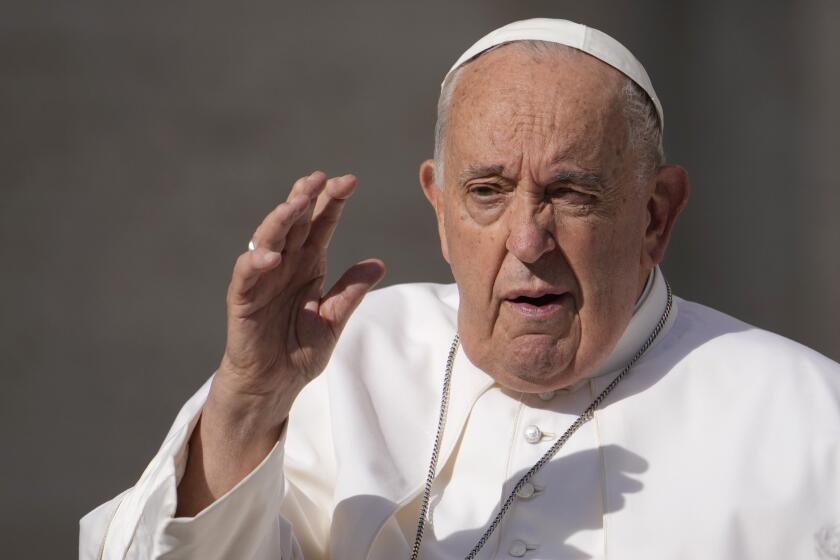Cash-Poor Mendocino Is Going to SEED
The wildflowers had begun to bloom here along the stunning “Forgotten Coast.” Jennifer Kreger was pregnant with her daughter, Yemaya, working hard at her medical practice, thinking she was in heaven.
Then, in the space of two weeks, five friends in this sparsely populated artists’ haven told her they had to leave town because they simply couldn’t make ends meet.
“The typical person works three part-time jobs to make it,” says physician Kreger. “Still, it just didn’t seem realistic that they had to go somewhere else to survive.”
After much research and debate, Kreger and her neighbors figured out what to do: If there’s not enough money here along the Northern California coast, why, they’d print their own.
On Sunday, after nearly two years of planning, a nonprofit collective in coastal Mendocino County did just that, issuing its own currency for use in a dozen small towns to improve the health of the region’s struggling businesses.
Keeping local money local “is a tremendous issue here,” says Barbara Matheson, chief administrative officer of the Fort Bragg-Mendocino Coast Chamber of Commerce. “We have a tremendous leakage of people going out of the area to shop. They might just be going for one item, but they think, ‘why not buy everything there’ ”
In the process of printing its own money, the region also will raise the minimum wage for participants to a de facto $10 an hour, create a regional monetary policy, turn its back on globalization and cause far-flung neighbors to meet each other.
And you thought the dollar was powerful.
Two months after the mighty European Community came out with the much heralded euro, Mendocino’s brightly colored SEED--short for “self-sufficient ecological economic development”--will quietly begin circulating from Elk to Westport. It will be the estimated 65th local currency born in this country since the original Ithaca HOUR was created nine years ago in upstate New York.
The bulk of those regional money systems--with names like Berkeley BREAD and Kansas City Barter Bucks have been created in the past two or three years, as news of Ithaca’s success spread and fears of economic chaos in the coming millennium increased.
This is how the SEED works: Each is worth one hour of labor. The Mendocino folk, in their infinite wisdom, place the value of that hour at $10, be it the hour of a lawyer or the hour of a laborer.
There will also be half-SEED notes, quarter-SEED notes and eighth-SEED notes--all on recycled paper and embossed with a serial number to make them hard to counterfeit. Some will be embellished with redwoods and a waterfall, others with a naked woman and a large, strategically placed fig.
Anyone interested in joining the new economy will pay a membership fee of $5 to $5,000 based on financial and business circumstances. Their business or service will be listed in a quarterly directory, and they will be issued SEED, which they can use to purchase goods or labor in the community.
A Different Mindset
Millennialists look at such a system as the beginning of serious self-reliance, a way to step out of the global economy, which they fear could go down on Jan. 1 because of technology’s habit of abbreviating years to their final two digits and confusing computers. 2000? 1900? Who’s to say?
“To the extent the infrastructure breaks down, all economic activity becomes local,” says Tom Atlee, editor of “Awakening: The Upside of Y2K.” “It ceases to be a minor effort to create community and becomes survival to create a local monetary system.”
But the millennium is not the first priority here in precious Mendocino, where every other clapboard house is a bed and breakfast, the automobile of choice is the well-aged Volvo, coffee is shade-grown, and bumper stickers urge “Kill Your TV.”
Nor is it top of mind in nearby Fort Bragg, Mendocino’s blue-collar cousin and home to the North Coast’s few franchise stores (including a Safeway complete with bait shop), its limited affordable housing, its puffing sawmill and lighted truck parade at Christmas.
The isolated land of the SEED, accessible only by two-lane highway, is cut off from Mendocino County’s inland population centers by a mountain range and averages only 17.5 people per square mile.
The county as a whole endures an official unemployment rate--8.2% in December--that is 50% higher than the state’s and nearly double the nation’s. The North Coast economy has long depended on redwoods and salmon, but environmental regulations, clear cutting and overfishing have caused jobs to bleed away over the past 15 years.
Tourism continues to grow but has been hampered of late by bad weather. On top of all that, the biggest stores with the best discounts--the Wal-Mart, the Kmart, soon, the Costco--are all over the hill in the county seat of Ukiah.
Anything that can keep business on the coast would be a boon, say the SEED’s creators. Still, North Coasters are a breed apart, self-reliant to a fault and proud of it. So there is as much fervor about the currency’s meaning as there is about its hoped-for economic benefit.
“It’s a weird and twisted world, and here’s an opportunity to have a tiny little neighborhood economic affair,” says Stanley Miklose, who will accept SEED at his Fort Bragg natural food store, Down Home Foods. “This is a ground-level opportunity for us to engage in developing our own value system.”
By purchasing more locally, says Kreger, she and her neighbors can avoid “buying things at stores where the products are made in another country, where there are no environmental controls, and people get lousy pay.”
That’s a lot of responsibility for a few pieces of paper printed along the North Coast (of course) and embellished with the work of local artists (of course) who are donating their images for the greater good (of course).
Even its proponents admit that the SEED is kind of complicated and definitely alien to the thinking of a society that grew up pulling greenbacks out of wallets.
Right now, 160 members have signed on to the new economy. Plumber Donna Feiner will accept SEED as partial payment, as will Margot Gallant and Cathy Kurvers, owners of the Book Loft. The Fort Bragg medical clinic will take the currency, as will Kreger and husband Wade Gray in their family practice.
If you don’t own a business and still want to trade in SEED, all you have to do is list the personal skills--or equipment or space--you’re willing to offer in exchange. Which is why members will be able to get their wood chopped, rent garden space and a backhoe to dig with, have their children watched.
“It’s a different way of looking at money,” says Susan Hofberg, a member of the SEED’s core working group whose collective--Corners of the Mouth natural food store--will accept the currency.
“It’s not dollars in a checkbook,” she says. “It’s goods and services that come into your life. If you get a haircut or massage or dance lesson you wouldn’t have had otherwise, it’s a benefit to your life. A U.S. dollar can be spent at RiteAid and then leave town. If a SEED is spent in the Mendocino Pharmacy, it has to be spent [again] here.”
Local Currency Deemed Legal
While the message may be just outside the mainstream, the practice of printing local currency is well within the bounds of U.S. laws. Those prohibit local governments--but not nonprofit agencies--from printing money, ban private coinage and insist that paper money like the SEED be in denominations larger than a dollar.
“Under the U.S. Constitution, federal statutes and regulations, a local currency modeled after Ithaca HOURS is legal,” says Lewis D. Solomon, professor of business law at George Washington University Law School. “Why? Because it’s not prohibited.”
The only caveat is that local currency transactions must be taxed like regular ones. In most regions, shopkeepers who take all or partial payment in local currency insist that taxes be paid in U.S. money.
The Ithaca HOUR model on which the SEED is based was the brainchild of Paul Glover--currently the most quoted man along the Mendocino Coast and a staunch alternative thinker.
While the HOUR was designed to help the unemployed and underemployed, the biggest impetus for the currency’s creation was to send a message from a college town that Glover describes as “decidedly liberal and beyond.”
“We printed our own money because we watched federal dollars come to town, shake a few hands, then leave to buy rain forest lumber and fight wars,” says the Ithaca HOUR home page.
But Glover, who runs the program and is paid partly in HOURS, said the effort grew from its initial 90 members to 1,500, including 400 businesses that see it as a good marketing device. Glover estimates that several million dollars’ value has so far been traded with paper money inscribed “In Ithaca We Trust.”
Still, Glover admits that even in his town, George Washington, Abraham Lincoln and Benjamin Franklin will never be unseated by bills bearing a Tompkins County waterfall or a Cayuga Lake steamboat.
“If economic good is defined strictly in terms of gross dollar economic exchange, then we are still a very small part of the local economy,” Glover acknowledges. “But while once you needed a microscope to measure us, now you only need a magnifying glass.”
A few smaller experiments in local currency sprang up in the decades prior to Ithaca’s, but the Depression was the last time such systems were in widespread use.
In fact, there are many places in the United States where local currency would likely fail today, says Susan Witt, executive director of the E.F. Schumacher Society, a Massachusetts-based nonprofit organization dedicated to renewing regional communities.
Such efforts “work well in rural communities of a certain size where there are enough economic transactions going on and in an inner-city neighborhood with a strong ethnic identity,” says Witt. “They don’t work in a suburb.”
Berkeley, which has circulated BREAD for the past two years, is one of the few places that falls outside of Witt’s model for the perfect local-currency region. Its program succeeds on the strength of its politics, for if an alternative lifestyle couldn’t flourish there, where could it?
Commitment and Sacrifice Required
More than 300 members are involved in BREAD, and $15,000 worth is in circulation. But Miyoko Sakashita, who co-founded the system, is most proud of the egalitarian elements of local currency, among them valuing one person’s labor as equal to another’s.
OK, so at first the masseuses balked and charged more than one BREAD an hour. After all, a high-end massage goes for as much as $100 an hour in Berkeley. But even BREAD’s masseuses are starting to come around, Sakashita says, and lowering their rates some.
The biggest difficulty for most systems is that they run on burnout-prone volunteer labor. BREAD hopes to hire someone soon to do the basic grunt work: Recruit new members, bring in businesses, update membership lists and put out quarterly directories.
Unfortunately for the Bolinas Sand Dollar, help did not come in time. The system, says founder Jill Whitcroft, is “in limbo” in this small town just outside San Francisco.
“People did help, but I was left holding the whole ball of wax,” she says. “I’m a single parent and needed to make a living.”
The Mendocino SEED is currently powered by a well-organized working group of at least half a dozen committed members. But even with that going for it, there are still hurdles.
Hofberg, for example, is currently trying to figure out where the new money should go in cash registers at Corners of the Mouth and where to record SEED on paychecks for those at the collective who are willing to accept it in salary.
But all of that will come in time, once the money is finally in circulation. Besides, she says, it’s just plain fun.
“It’s like liking to play store when you’re a kid,” Hofberg says. “I’d make food out of Play-doh. Here I am, with real food and play money.”
More to Read
Start your day right
Sign up for Essential California for news, features and recommendations from the L.A. Times and beyond in your inbox six days a week.
You may occasionally receive promotional content from the Los Angeles Times.

